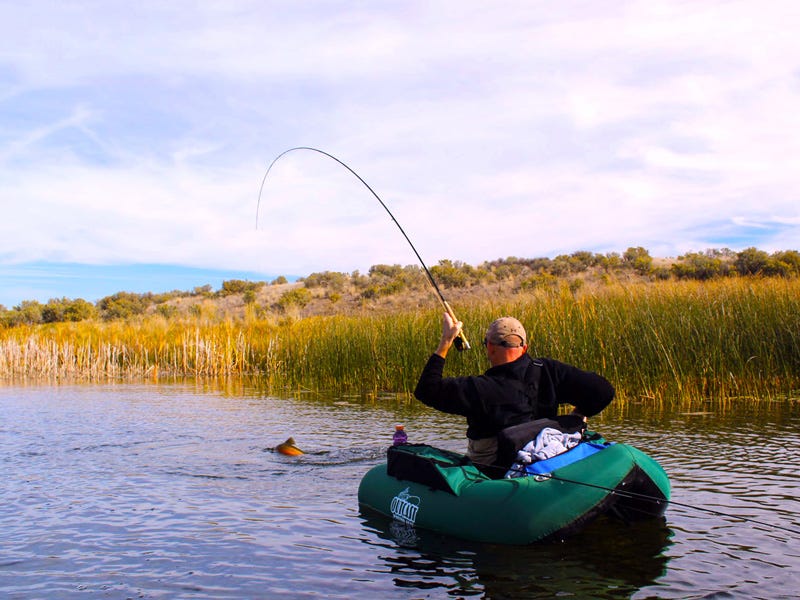5 Steps to Stillwater Success


If the spring runoff is giving you an itch you need to scratch, than why not fish a lake. This time of year is a great time to put in some hours and work on your stillwater game.
There are a lot of people who are intimidated, or at least a bit overwhelmed, at learning how to fish a big, flat, non-moving body of water. Don’t worry... it’s not too tough once you get the basics and narrow things down a bit.
Here’s a quick and dirty tip list that will get you started with the basics of stillwater fishing.
Focus on areas closer to the shore
All of that water in the middle of the lake- don’t worry about it. It’s likely just too deep to efficiently fish it if you don’t have a lake map.
If you're looking for a lake map... or if you want to get real technical we've got some gear you could add to your fishing rig here--fish finders... etc.
Learn the Water
The elevation contours in the water closely follow those of the shore. If there is a gradual slope from land into the water, it’s a safe bet that the water will stay shallow for a ways out. A steep hill to the shore and the water will get deep pretty fast.
In general, bigger fish lurk out below an abrupt drop-off, looking to eat smaller fish that cruise high in the water column from shallow to deep water depth. If you can get up on a hill and take a look at the lake, it’ll help to know where these drop-offs are.
Use an Indicator
This time of year you can find trout cruising around closer to shore (not quite as close to shore as when they spawn, but still within reasonable casting distance). You can start by fishing with a pheasant tail, prince nymph, chironomid, or leech pattern 4-5 feet under an indicator in about 10 feet of water- in other words, wade in until you’re waist deep in the lake and cast out.
Shop for leaders & indicators in our online catalog available here.
Try combinations of just letting it sit, giving it a twitch, and slowly stripping it in. Change the leader depth as needed.
Strip a Streamer
I find that plain old unweighted woolly bugger and woolly worm variants, in assorted colors, are a good place to start. While you can use a floating line, using a sink tip or, better yet, a full sinking line will get the fly down close to the bottom quicker and give a more even retrieval.
Keep the retrieval sporadic strip, short wait, strip-strip, long wait, strip-strip, short wait, long quick strip- you get the idea.
Hop in a Float Tube
Similar to tip #4, cast your streamer out there then let more line out to get your fly deeper. If it’s calm you may need some flippers to propel you around, but often times the wind is strong enough that you can just row upwind and let the wind blow you down the shoreline.
Since you have the advantage of floating, you can try different depths/distance from shore.
If you’re going deeper it will help to use some split shot or a weighted fly to help get your fly down 10-20ish feet quicker. If you’re not catching fish, get your line deeper by using more weight on your fly/leader and letting more fly line out.
So you have an idea... Now Give Stillwaters a Try
Remember- unless you have a lake-depth map, or have a fish finder with a depth reader, the further you are from shore, the tougher it is to read the lake bottom.
While these aren’t hard and fast rules, they are pretty solid tips to start fishing a new type of water.
There are plenty of lakes around to fish. Give it a whirl and see what happens... and if you want more content like this, remember to sign up to receive North 40 Fly Shop's free eMag, right here.
